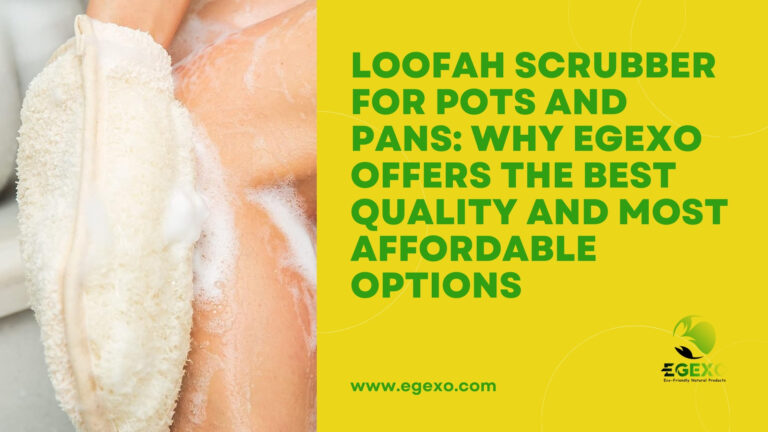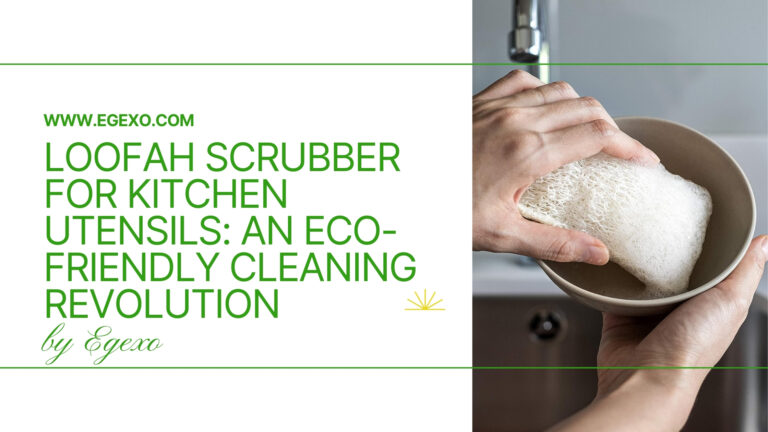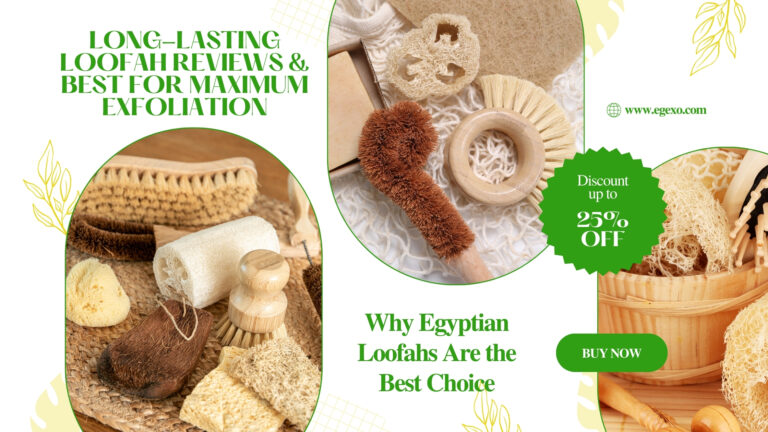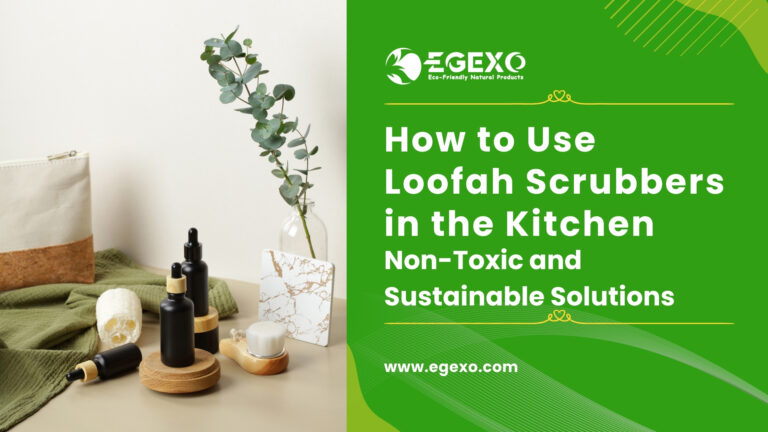Growing and Harvesting Luffa: From Seeds to Sustainable Sponges
The growing interest in sustainable living has led many to explore natural alternatives for everyday products. One such alternative that has gained popularity is the luffa sponge, a biodegradable and versatile product derived from the Luffa plant. In this comprehensive guide, we will delve into how to grow luffa from seeds, harvest them, and prepare them for use as sponges. We will also highlight the benefits of Egyptian loofahs as sustainable options for various applications, and introduce you to EGEXO, a leading supplier of high-quality, affordable Egyptian loofahs with custom product services.
Understanding Luffa: The Plant and Its Uses
Before diving into the cultivation process, it’s important to understand what luffa is and how it can be used. The luffa plant, belonging to the Cucurbitaceae family, includes several species, with Luffa acutangula and Luffa cylindrica being the most common. The fruit of these plants is typically harvested when mature, dried, and processed into sponges for personal care, cleaning, and crafting.
Luffa sponges are prized for their:
- Natural exfoliating properties, making them ideal for skincare.
- Biodegradability, offering an eco-friendly alternative to synthetic sponges.
- Versatility, suitable for use in bathrooms, kitchens, and various crafting projects.
Step-by-Step Guide to Growing Luffa from Seeds
Growing luffa at home can be a rewarding endeavor, allowing you to produce your own natural sponges. Here’s how to get started:
1. Choosing the Right Seeds
When selecting luffa seeds, look for reputable sources that offer high-quality, non-GMO seeds. Egyptian luffa seeds are an excellent choice due to the plant’s adaptability and the premium quality of the resulting sponges.
2. Preparing the Soil
Luffa plants thrive in warm, well-drained soil rich in organic matter. To prepare your garden bed or container:
- Test the soil pH, aiming for a range of 6.0 to 7.0 for optimal growth.
- Amend the soil with compost or well-rotted manure to enrich it and improve drainage.
3. Sowing Seeds
Luffa seeds can be started indoors or directly in the garden, depending on your climate.
- Indoor Start: Sow seeds in seed trays about 6-8 weeks before the last frost date. Keep them warm and moist until germination.
- Outdoor Planting: After the danger of frost has passed, sow seeds 1 inch deep and 3 feet apart in a sunny location. Water the seeds gently to avoid displacing them.
4. Caring for Luffa Plants
Once your luffa seeds have germinated and seedlings are established, care for your plants by:
- Watering Regularly: Keep the soil consistently moist but not soggy. Luffa plants prefer a moderate amount of water.
- Providing Support: As luffa plants grow, they will need support to climb. Install trellises or fences for the vines to attach to.
- Fertilizing: Use a balanced organic fertilizer every 4-6 weeks during the growing season to encourage healthy growth.
5. Pest and Disease Management
Monitor your plants for pests such as aphids and squash bugs, and treat them organically if needed. Good air circulation and proper spacing can help prevent fungal diseases.
Harvesting Luffa
Harvesting luffa is a crucial step to ensure you get the best quality sponges. Here’s how to do it:
1. Timing the Harvest
Luffa fruits are typically ready for harvest 3-4 months after planting. You’ll know they are ready when they turn brown and begin to dry out on the vine. The fruits should feel lightweight, indicating that most of the moisture has evaporated.
2. Cutting the Fruits
Using sharp garden shears, cut the mature luffa fruits from the vine, leaving a short stem attached. Handle them carefully to avoid damaging the skin.
3. Drying the Fruits
Once harvested, the next step is drying the luffa:
- Place the luffa fruits in a cool, dry area with good air circulation. You can also use a dehydrator or the oven to speed up the drying process.
- Drying luffa in the oven: Preheat your oven to the lowest setting (around 150°F or 65°C). Cut the luffa fruits lengthwise and place them cut-side up on a baking sheet. Keep the door slightly ajar to allow moisture to escape. Check them regularly, and they should be fully dried in a few hours.
4. Removing the Skin and Seeds
After the luffa fruits are completely dry, gently remove the outer skin, exposing the fibrous network inside. Shake out the seeds, which can be saved for planting next season.
Benefits of Using Egyptian Loofahs
Egyptian loofahs are particularly valued for their exceptional quality. Here are some benefits of using them:
- Sustainability: As a natural product, Egyptian loofahs are fully biodegradable, making them an excellent choice for eco-conscious consumers.
- Exfoliating Properties: The natural fibers of Egyptian loofahs provide effective exfoliation, helping to remove dead skin cells and promote circulation.
- Versatility: Egyptian loofahs can be used in various applications, from skincare routines to household cleaning and crafting projects.
- Durability: When properly cared for, Egyptian loofahs are long-lasting, providing great value compared to synthetic alternatives.
- Health Benefits: The natural fibers are less likely to harbor bacteria compared to synthetic sponges, promoting a healthier bathing and cleaning experience.
Why Choose EGEXO for Your Luffa Needs?
At EGEXO, we are committed to providing high-quality, affordable Egyptian loofahs that meet the diverse needs of our customers. Here’s why you should consider EGEXO as your go-to supplier:
- Premium Quality: Our Egyptian loofahs are sourced from the finest growers, ensuring that every sponge is of the highest quality and durability.
- Custom Product Options: We offer custom product services for businesses looking to create unique branding solutions with private label options. Whether you need bulk loofahs for retail or specialized designs, EGEXO can accommodate your needs.
- Affordable Pricing: Our competitive pricing allows businesses and consumers alike to access premium loofahs without breaking the bank.
- Sustainable Practices: At EGEXO, we prioritize sustainability in our operations, from sourcing loofahs to packaging. By choosing us, you’re supporting environmentally friendly practices.
- Expert Guidance: With extensive experience in the loofah market, our team is here to provide expert guidance and support to help you find the right products for your needs.
Conclusion
Growing and harvesting luffa at home is a rewarding journey that results in sustainable, eco-friendly sponges for personal care and household use. By starting with quality luffa seeds, providing the right care, and following proper harvesting and drying techniques, you can enjoy the benefits of this versatile plant.
As you explore the world of luffa, consider EGEXO for your Egyptian loofah needs. With our commitment to quality, affordability, and sustainability, we are proud to support eco-conscious consumers and businesses in their quest for natural alternatives. Embrace the beauty of luffa sponges and contribute to a greener planet with EGEXO’s premium products!







